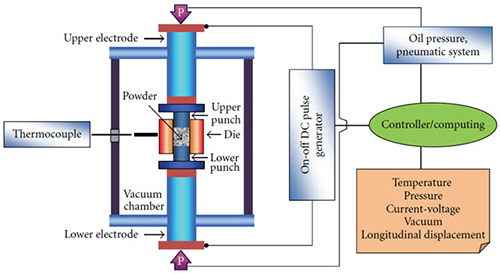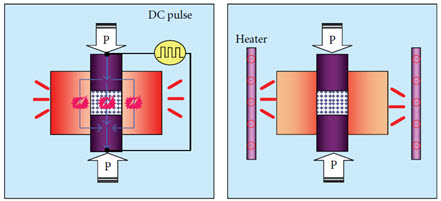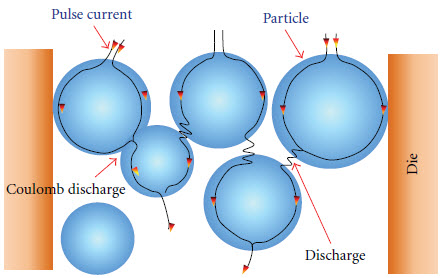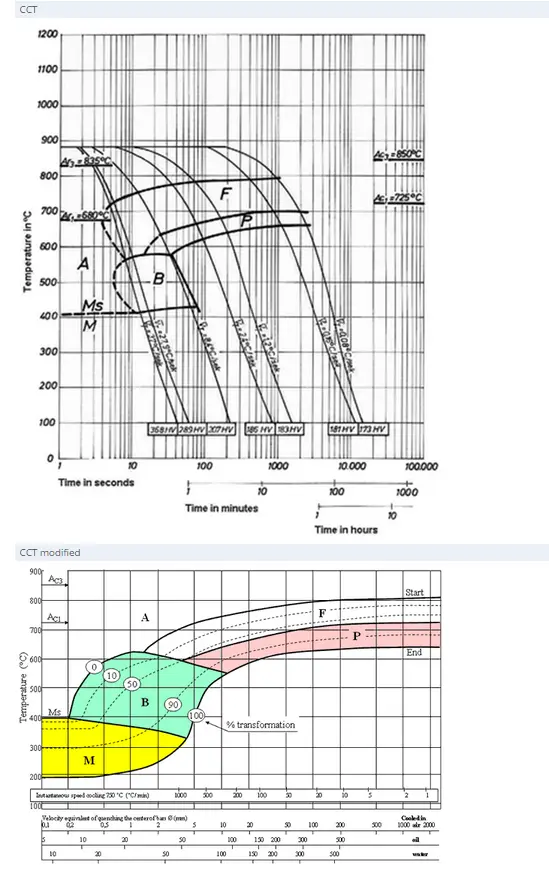Spark Plasma Sintering
Abstract
Spark Plasma Sintering (SPS) represents a revolutionary powder processing technique that dramatically reduces sintering time from hours or days to just minutes. This advanced method utilizes pulsed direct current to generate internal heating, achieving heating rates exceeding 300°C/min compared to conventional sintering's 5-8°C/min. The SPS process comprises four main stages: gas removal and vacuum creation, pressure application, resistance heating, and cooling. Unlike conventional sintering, SPS generates localized high-temperature states through spark discharge, creating necks between particles while maintaining superior mechanical properties. This binderless process eliminates precompaction requirements and enables consolidation of nanopowders without excessive grain growth. SPS technology offers significant advantages in manufacturing dense materials with enhanced properties for various industrial applications.
Introduction to Spark Plasma Sintering Technology
Spark Plasma Sintering represents a relatively new technique that offers significant advantages over conventional sintering methods, primarily through the extremely small amount of time required to complete the process. This innovative approach has transformed powder processing by enabling manufacturers to achieve superior results in minutes rather than hours or days.
The fundamental principle behind SPS lies in its ability to generate high heating rates through internal heating of the sample, contrasting sharply with the external heating methods employed in conventional sintering techniques. This internal heating mechanism, combined with optimized processing parameters, allows for rapid consolidation while maintaining exceptional material properties.
Historical Development and Evolution
The concept of spark sintering was first investigated and patented in the 1960s for compacting metal powders. However, due to high equipment costs and low sintering efficiency, the technology was not widely adopted at that time. The breakthrough came during the mid-1980s to early 1990s when researchers developed a new generation of sintering apparatus, leading to the emergence of Plasma Activated Sintering (PAS) and Spark Plasma Sintering (SPS).
These advanced systems share a common characteristic: the use of pulsed direct current to heat specimens. This development has attracted growing attention from both production engineers and materials researchers, as these sintering techniques offer unprecedented control over the consolidation process. The academic community has also recognized this family of techniques under various names, including pulsed electric current sintering (PECS) and electric pulse assisted consolidation (EPAC).
Process Fundamentals and Equipment Configuration
The SPS process utilizes sophisticated equipment that integrates multiple components to achieve optimal results. The sintering machine incorporates a uniaxial press, punch electrodes, vacuum chamber, controlled atmosphere system, DC pulse generator, and comprehensive measuring units for position, temperature, and pressure monitoring.

Figure 1: Schematic diagram of the SPS process, showing the complete equipment configuration and component relationships
Control of sintering temperature is achieved through precise adjustment of holding time, ramp rate, pulse duration, and pulse current and voltage parameters. The DC pulse discharge generates multiple beneficial effects including spark plasma formation, spark impact pressure, Joule heating, and electrical field diffusion effects. This multi-faceted approach enables superior densification compared to conventional hot pressing methods.

Figure 2: Comparison between SPS and conventional sintering processes, highlighting the key differences in heating mechanisms
Four-Stage SPS Process
The SPS process typically follows four distinct stages, each serving a specific purpose in achieving optimal densification. The first stage focuses on gas removal and vacuum creation, ensuring a clean processing environment free from atmospheric contaminants. The second stage involves pressure application, which facilitates plastic flow of the material and promotes particle rearrangement.
The third stage constitutes the resistance heating phase, where the unique characteristics of SPS become most apparent. During this stage, spark discharge occurs in gaps or at contact points between material particles, generating localized high-temperature states reaching several to ten thousand degrees centigrade momentarily. This extreme temperature generation causes evaporation and melting on powder particle surfaces, leading to neck formation around contact areas between particles.
The fourth and final stage involves controlled cooling, allowing the consolidated material to achieve its final structure and properties. This systematic approach ensures consistent results while minimizing processing time and energy consumption.
Advantages Over Conventional Sintering Methods
The superior performance of SPS becomes evident when comparing processing times and heating rates with conventional methods. Traditional sintering techniques typically achieve heating rates of 5 to 8°C/min, with maximum rates reaching 10°C/min under optimal conditions. Consequently, reaching a temperature of 1200°C usually requires 2 to 4 hours or more in conventional furnaces.
In contrast, SPS easily achieves heating rates exceeding 300°C/min, enabling the same 1200°C temperature to be reached in merely 4 minutes. This dramatic improvement in heating rate translates to significantly reduced overall processing time, with SPS requiring only 5 to 10 minutes of holding time at sintering temperature compared to hours in conventional processes.
The rapid heating and short holding times characteristic of SPS provide additional benefits beyond time savings. The application of pressure and current, combined with high-localized temperatures generated through resistance pulse heating, improves heating rates while reducing both sintering time and temperature requirements. This enables successful consolidation of nanopowders without excessive grain growth, a significant advantage for maintaining desired material properties.
Unique Processing Characteristics
SPS offers several distinctive advantages that set it apart from conventional powder processing methods. The process is inherently binderless, eliminating the need for organic binders that often compromise final material properties or require additional processing steps for removal. Additionally, SPS does not require a precompaction step, simplifying the overall manufacturing process.
The powder is directly filled into a graphite die through which current is passed while pressure is applied simultaneously. This direct approach leads to fully dense materials with superior mechanical properties compared to those achieved through conventional methods.

Figure 3: DC pulse current flow through particles, illustrating the mechanism by which electrical energy is distributed throughout the powder compact.
Plasma Generation and Electrical Effects
Whether plasma is actually generated during SPS processing remains a subject of ongoing investigation, particularly when processing non-conductive ceramic powders. However, experimental verification has confirmed that densification is significantly enhanced by the use of pulsed DC current or electrical fields, regardless of the specific mechanism involved.
The electrical field diffusion effect, combined with Joule heating and spark impact pressure, creates a synergistic environment that promotes rapid and uniform densification. This multi-faceted approach to material consolidation represents a fundamental departure from conventional thermal processing methods.
Applications and Material Systems
SPS technology has demonstrated remarkable versatility in processing various material systems, including both ceramic and metal powders. The ability to achieve densification at lower temperatures and in shorter times makes SPS particularly attractive for processing temperature-sensitive materials or those prone to grain growth during extended thermal exposure.
The technique has found applications in manufacturing advanced ceramics, metal matrix composites, functionally graded materials, and nanostructured materials. The superior mechanical properties achieved through SPS processing make it increasingly valuable for high-performance applications in aerospace, automotive, electronics, and biomedical industries.
Future Perspectives and Technological Developments
As SPS technology continues to evolve, researchers are exploring new applications and process improvements. The fundamental advantages of rapid processing, superior property development, and energy efficiency position SPS as a key technology for future manufacturing needs. Continued development in equipment design, process control, and material understanding will likely expand the range of applications and improve the cost-effectiveness of SPS processing.
The growing interest from both academic researchers and industrial manufacturers suggests that SPS will play an increasingly important role in advanced materials processing, particularly as demands for high-performance materials continue to increase across various industries.
Trova all'istante migliaia di diagrammi di trattamento termico!
Total Materia Horizon contiene dettagli sul trattamento termico per centinaia di migliaia di materiali, diagrammi di temprabilità, indurimento e rinvenimento, diagrammi TTT e CCT, e molto altro.

Ottieni un account di prova GRATUITO su Total Materia Horizon e unisciti a una comunità di oltre 500.000 utenti provenienti da più di 120 paesi.